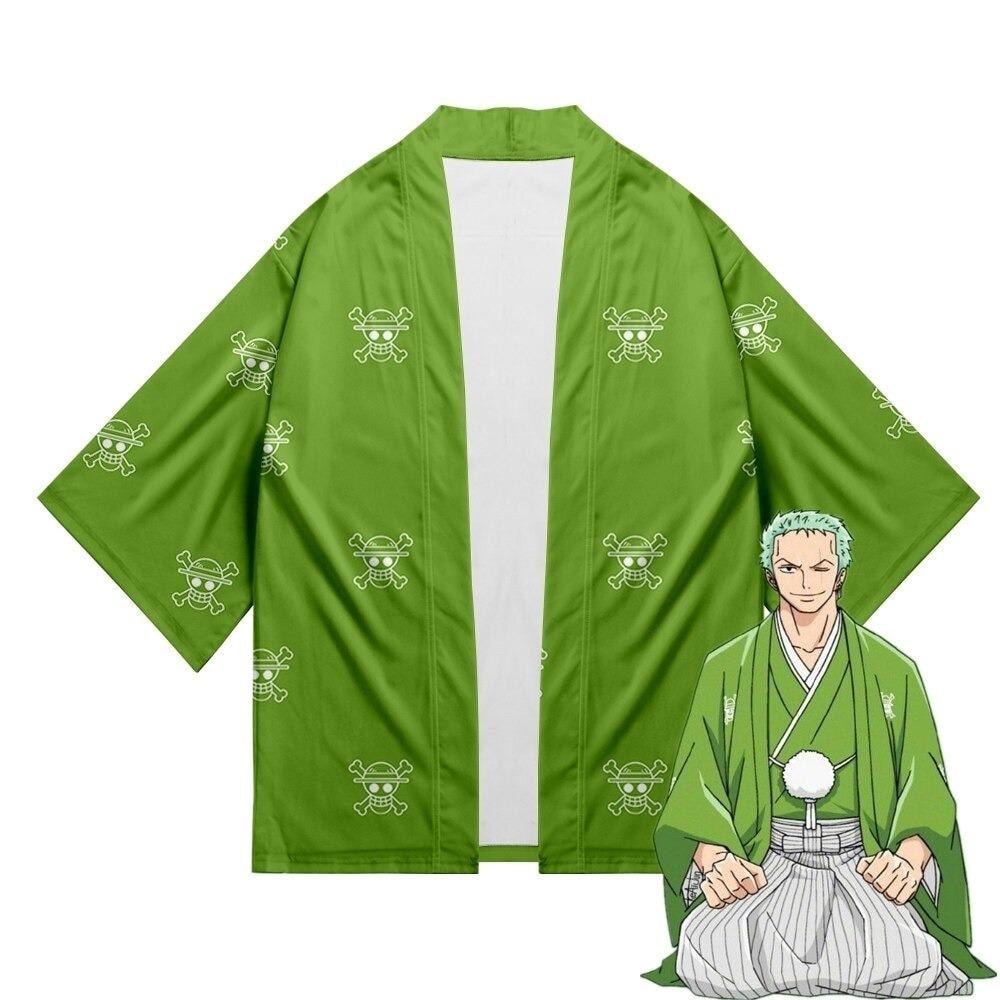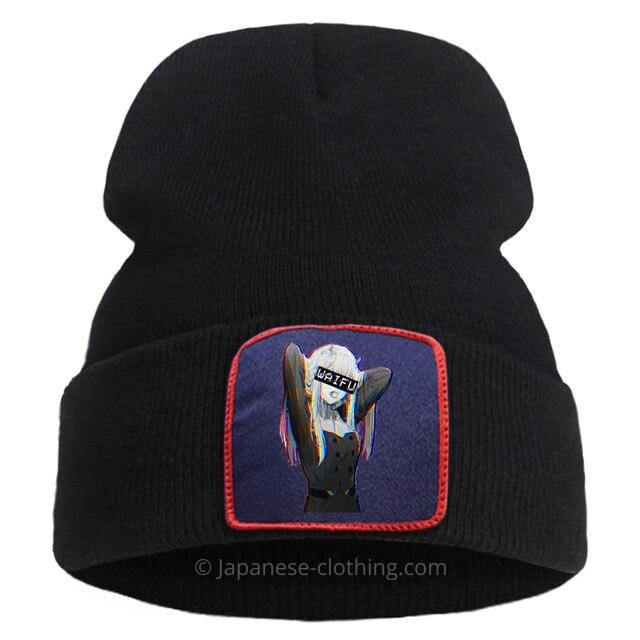One thing is for sure, in Japan, the most symbolic garment you can find is definitely the Japanese Kimono in all its splendor. However, did you know that there are many different types of Kimono worn on different occasions and at different times in a Japanese person’s life? Why do you ask?
Well, the reason why there are different types of Kimono for men and women is because this garment was intended at the time to affirm the social and maritime status of its wearer. Indeed, young Japanese people do not wear the same Kimonos as the old ones. Also, the Kimonos worn by single Japanese are not the same as those worn before and after a wedding.
Intriguing isn’t it? So let’s discover the different types of Kimono for men and women that can be found in Japanese fashion to make sure you wear the right Japanese clothing for the right occasion:
#intro
Types of Kimono for Women
1. Furisode
Furisode (振袖, lit. “swinging sleeves”) is a formal Kimono worn by unmarried women and is the most formal garment that a single Japanese woman can wear on special occasions, such as coming-of-age ceremonies, voting, wedding ceremony (single relatives of the bride’s family) and tea ceremony.
Furisode Kimono are decorated with a colorful pattern that covers the entire garment. In addition, this type of Kimono for women has extremely long sleeves that indicate how formal this type of clothing is.
Indeed, the longer the sleeves of the Furisode, the more it means that the Furisode Kimono is formal. Some Japanese Kimono Furisode even have sleeves that can fall up to about 1 meter in length.
2. Komon
Komon (小紋, small pattern) is a casual and the most informal silk kimono designed for everyday wear. It is characterized by small patterns that are distributed throughout the fabric, such as squares, geometric shapes, circles, stripes or other drawings.
2.1. Edo Komon
As for the edo komon (江戸小紋), it is more formal and can carry coats of arms. It is notable for its small dots arranged to form larger motifs. It has the same formality as an iromuji, and is also used for the tea ceremony.
3. Tomesode
The tomesode (留袖, fastened sleeve) is a short sleeve kimono the most formal garment worn by married women. They always have patches, and patterns, which can be incorporated gold and silver, and are only found below the waist.
There are two types, the kurotomesode (黒, black) and irotomesode (色, colored):
3.1. Kurotomesode
The Kurotomesode (黒留袖) are formal black kimono for married women with, ornaments in colors such as blue, gray, gold, and beige. The older you get, the smaller the ornament should be and the more it should be towards the bottom of the kimono.
This type of kimono is worn by mothers on their children’s wedding day, and is also commonly seen at tea ceremonies and Shinto festivals. From this kimono comes the Irotomesode.
3.1. Irotomesode
The Irotomesode kimono (色留袖) is the colorful variant of the Kurotomesode. They can have any basic color other than black, and can have one, three or five ridges. with the same characteristics at first glance but worn at weddings by married women who are not close relatives.
4. Iromuji
Iromuji (色無地) is a type of solid colored kimono made of a single color and that can worn by any woman without distinction in semi-formal events. It is commonly used in the tea ceremony, although it can be worn to countless occasions, such as birthdays, festivals, school events, among others.
This type of kimono is also the most used type of Kimono by men and boys, although it is not exclusive for them.
5. Mofuku
Mofuku (喪服, lit. “mourning clothes”) are black mourning dresses and funeral attires without prints or details adorned on them that are worn by men and women of all ages.
At funeral ceremonies, the deceased person is dressed in white, wearing a kimono called Shinishouzoku which is a light kimono of very fine silk, designed to be worn without obi (sash that is placed on top of the kimono) and this is only worn by the deceased, no one else.
6. Odori Katamigawari
Odori Katamigawari are Japanese Kimonos mostly worn by traditional Japanese dancers. Odori (踊) means dance and Katamigawari (かたみがわり) means half and half, this is because the kimono is composed of two halves of designs that are joined together.
The vast majority of odori kimonos are in fact tsukesage, houmongi or komon kimonos. However, they are often made of synthetic textiles, which are much lighter and more breathable and have the advantage of being able to be washed regularly unlike traditional silk kimonos.
7. Susohiki/Hikizuri
Susohiki (裾引き, lit. “trailing skirt” also known as hikizuri are very long women’s kimonos worn mainly by geisha or traditional Japanese dance artists. Compared to a normal women’s kimono, the base of the kimono is much longer and drags on the floor when the woman walks, which explains why this kimono is mostly worn indoors.
8. Yukata
The Yukata (浴衣, lit. bathing cloth) is the star garment of traditional summer clothing in Japan and is usually worn during warm seasons. Unlike the silk kimono, the Yukata kimono is made of brightly colored cotton, making it cheaper much easier to wear and maintain.
9. Houmongi
Houmongi (訪問着, lit. Visiting clothes), sometimes also spelled homongi, is a semi-formal kimono dress that can be worn by both single and married women on semi-formal occasions. Houmongi are usually made any color with asymmetrical patterns dyed around the body without breaking at the seams.
10. Uchikake
The Uchikake (打ち掛け) is a part of the bridal costume. It is a long-sleeved kimono richly adorned with brightly colored embroidery and motifs usually of cranes, pine trees, flowing water and flowers. It is made with the finest silk and the lower part is padded to give it more volume. It is worn as a cape and without obi.
It was originally worn by noblewomen for formal occasions, but now represents an essential component in Japanese bridal attire.
Types of Kimono for Men
As you may have already read, some of the above types of kimono are genderless and can be worn by both men and women, however just as there are kimonos for married and single women, formal and informal, there are some specific types for men.
Casual male Kimono is equal in shape to the Komon, but comes in dark colors such as gray, blue and black, it is usually made with wider shoulders and has a less thick obi than women’s, the sleeves are slightly shorter and wider. Its prints are limited to cherry trees, animals and predominantly geometric textures.
1. Montsuki
The montsuki (もんつき, lit. family attire) It is the formal kimono for men over the age of majority, regardless of their marital status. It is made of black, gray or beige silk, and has many pleats and wide sleeves attached to the body.
It does not usually have prints or embroidery, rather the fabric may have textures such as horizontal or vertical lines. It is mostly worn to weddings and graduations, but it is also the kimono worn by the emperor on different occasions, as well as by Shinto priests.
2. Hakama
The hakama is a kind of extremely loose-fitting pants, with many pleats, which men usually wear over a casual kimono to make it more formal or sophisticated.
The formal men’s suit is also usually accompanied by a much wider and shorter kimono that is worn over the other kimono and the hakama, this is unzipped as a robe or coat.







